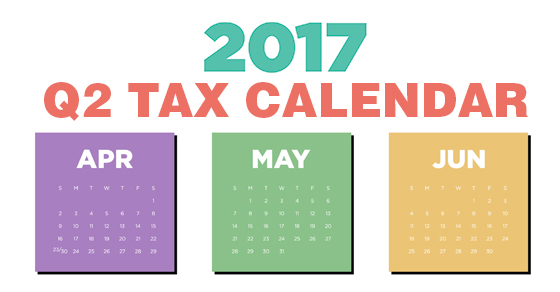Here are some of the key tax-related deadlines affecting businesses and other employers during the second quarter of 2017. Keep in mind that this list isn’t all-inclusive, so there may be additional deadlines that apply to you. Contact us to ensure you’re meeting all applicable deadlines and to learn more about the filing requirements.
April 18
- If a calendar-year C corporation, file a 2016 income tax return (Form 1120) or file for an automatic six-month extension (Form 7004), and pay any tax due. If the return isn’t extended, this is also the last day to make 2016 contributions to pension and profit-sharing plans.
- If a calendar-year C corporation, pay the first installment of 2017 estimated income taxes.
May 1
- Report income tax withholding and FICA taxes for first quarter 2017 (Form 941), and pay any tax due. (See exception below.)
May 10
- Report income tax withholding and FICA taxes for first quarter 2017 (Form 941), if you deposited on time and in full all of the associated taxes due.
June 15
- If a calendar-year C corporation, pay the second installment of 2017 estimated income taxes.




